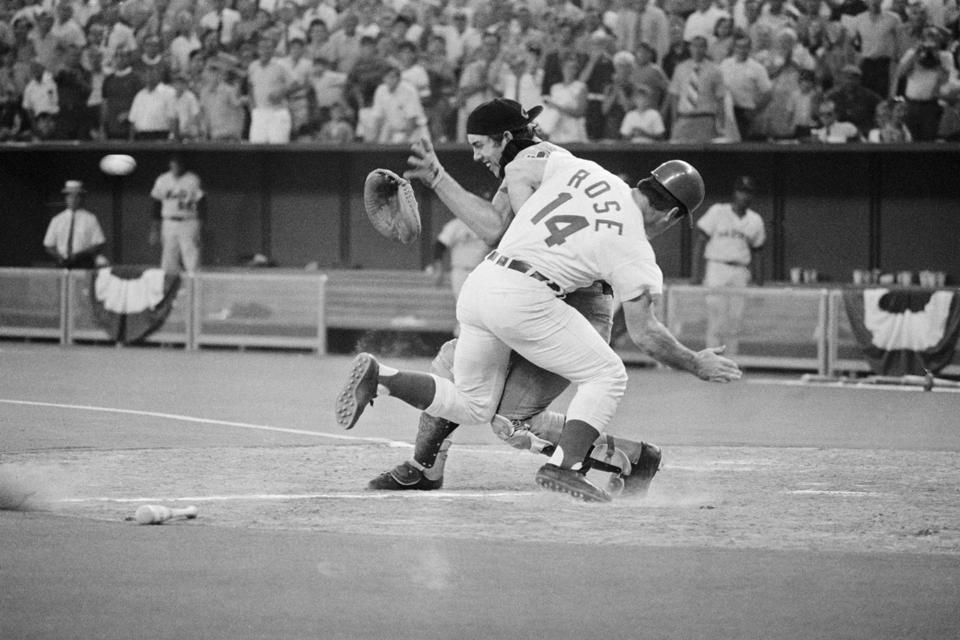The Major League All-Star voting process is flawed. It starts too soon and doesn’t account for changes that occur in the six weeks prior to the game.
Complaining about All-Star games is a cottage industry. No fan of any of the four major sports likes their version.
Various websites and videos proclaim that “the NHL should never have an All-Star game again,” or “no one cares about” the NHL All-Star game. In fact, the NHL cancelled the 2026 version. In lieu thereof, there will be a kick-off event for the 2026 Winter Olympics.
The NBA All-Star game is such a joke that the East team scored 211 points in the 2024 edition. Rather than keep up with this charade, the league changed the format to a four-team single elimination tournament, with TNT analysts choosing three of the teams, and the remaining squad made up of “rising stars.”
The NFL threw in the towel on its Pro Bowl in 2022, shifting to a skills competition and a non-contact flag football game.
All of which left Major League Baseball as the last bastion of all-star prowess. Sure, the game was marred by former commissioner Bud Selig declaring the 2002 edition a tie. And yes, the year after that he instituted a rule that league that won the game had home-field advantage in the World Series. But, at least for an inning or two, the players still play hard(ish).
The problem with MLB’s All-Star game is the voting – both the nature and, more importantly, the timing. Way back when, the ballot box could be stuffed with as many cards as a fan could punch holes in during the course of a game. But that at least limited the “box stuffers” to actual fans attending actual games. Today, anyone can vote up to five times per day on their computer from the comfort of their sofa. As such, fans from a particular team can overwhelm the voting process, eliminating more deserving players from consideration.
The ballot-stuffing, however, may not be as big a problem as when the voting begins. In fairness, there is a lot that goes into picking a team of all-stars, and the clubs and players need time to prepare. That said, final decisions are made at the last minute every season (this one included), so logistics cannot be the main excuse.
For instance, this year’s Phase 1 voting began on June 4th and closed on June 26th. It is absurd to believe that fans (or anyone else) can select all-stars after only 60 games. By June 26th, the season is roughly at the half-way point, so that is a fine starting point. But what to do about all of the votes cast the first week or two? Those missed all of the players who rounded into form and/or got hot over the past month. As such, there are many snubs for players who deserve to be there; not to mention a few players who have cooled off so much that they could (and maybe should) have their All-Star invitation revoked.
Since the voting opened on June 4th, National League starting shortstop Francisco Lindor has slashed .217/.283/.384. Lindor’s teammate, the $765 million outfielder who will not be in Atlanta as an All-Star, is the inverse. Since that same date, Juan Soto is slashing .314/.458/.636 with 12 home runs. On the season, Soto has better stats in every offensive category (save for stolen bases, where Lindor leads 15 to 11). And yet, because of the timing of the voting, Lindor gets his $50,000 All-Star bonus while Juan Soto loses out on additional $100,000. (For clarity, this injustice is not a money issue.)
Let’s look at the case of Javy Báez, who will now be one of only four players to start an All-Star game at three different positions (he previously did so at second base and shortstop). He was elected as an outfielder this year. When voting opened – through June 3rd – Báez was slashing .270/.302/.431 with six home runs. Those were on pace to be his best numbers since 2021. And since then, he has kept pace, making his “at the break” slash line .275/.310/.442.
However, a funny thing happened over the past month in Boston. Since fans started casting ballots, Ceddanne Rafaela, playing Gold Glove-caliber center field for the Red Sox, has slashed .300/.339/.617, with 9 home runs. He is currently in the midst of a 10-game hitting streak that, not coincidentally, matches Boston’s current 10-game winning streak. Take a look the full season comparison between the two:
Which player deserves to have his name called and get to run along the foul line and then jog out to center field in Atlanta on Tuesday night?
We could do this analysis for Michael Busch at first base over Freddie Freeman, who has been a disaster since voting began (.192/.261/.262). Trea Turner over the previously mentioned Francisco Lindor. Seiya Suzuki or Andy Pages over Corbin Carroll (.192/.289/.462 since June 4 (with an injury in-between)).
The point is that voting is too early and too often. MLB narrows the list down at the end of Phase 1, and opens voting for Phase 2 for three days between June 30 – July 2, when fans can vote once per day. Why not make that the entire process? Why not do that even later? Say the weekend prior to the final weekend prior to the All-Star break. That leaves plenty of time for the All-Star managers to set their lineups, and the clubs/leagues to facilitate transportation, and players to make their plans.
If this was the system, mistakes would still be made; older and more popular players would still be voted in over lesser-known youngsters; and players (and fans) would still gripe. But at least the composition of the All-Star teams would more accurately reflect who is an All-Star at the time the game is actually played, and not six weeks beforehand.

